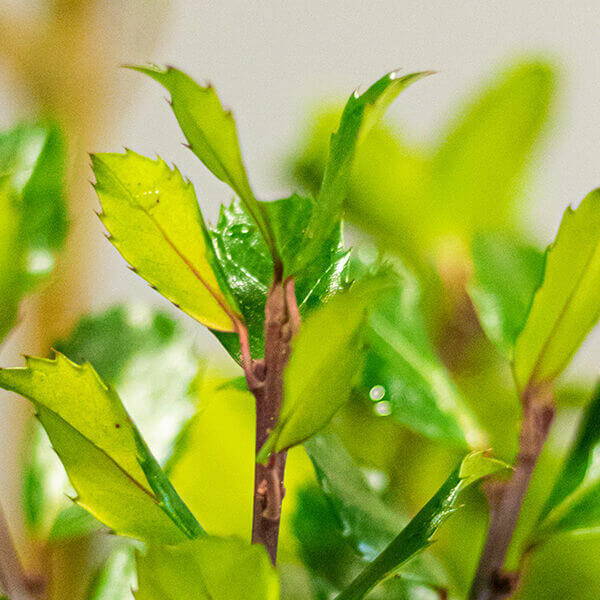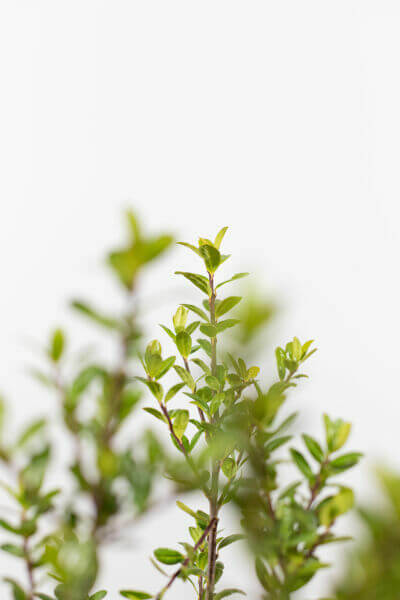Best Hedging Plants For Balcony Gardens
Best Hedging Plants For Balcony Gardens
Blog Article
Hedge Plants For Pathways
Boost your garden's allure with lush hedge varieties such as Yew (Taxus), Thuja, Laurel, Photinia, and Bamboo, commemorated for their structural stability and environmental benefits.
Yew and Thuja supply evergreen coverage and winter strength, while Laurel offers fast development and broad, fragrant leaves.
Photinia adds seasonal beauty with its vibrant red foliage, and Bamboo lends a low-maintenance, tranquil ambiance.
These hedges improve air quality, minimize noise, and create tranquil, private areas.
Proper planting, spacing, and maintenance make sure energetic growth and environmental consistency.
Explore how these rich ranges can raise your garden's beauty and well-being.
Secret Takeaways
Change Your Garden With Lush Hedge Varieties
- Select Yew for its dense, evergreen growth and exceptional durability.
- Opt for Laurel for its fast growth and broad leaves, guaranteeing fast personal privacy.
- Pick Photinia for its lively seasonal foliage, which turns a striking dark red.
- Utilize Bamboo for a low-maintenance, winter-hardy hedge with aesthetic appeal.
- Space plants 2-3 per meter and prune frequently for optimum growth and health.
Popular Hedge Plants
When changing a garden with lavish hedge ranges, it's vital to consider popular hedge plants such as Yew, Thuja, Laurel, and Photinia due to their distinct attributes and benefits.
Yew (Taxus) is extremely esteemed for its durability and thick, green development, making it a prime option for enduring landscapes.
Thuja is noted for its evergreen foliage and robust winter resilience.
Photinia adds seasonal vibrancy with red leaves that darken gradually, producing vibrant visual appeal.
Laurel provides quick development and aromatic, broad leaves, suitable for quick privacy.
Additionally, Bamboo is an excellent choice for ambiance, offering a low-maintenance, winter-hardy option that enhances the garden's visual with its sophisticated, swaying walking sticks.
These selections accommodate a variety of horticultural requirements and choices.
Advantages of Garden Hedges
Garden hedges offer a wide variety of benefits, making them an important addition to any landscape. These natural barriers are cost-efficient to execute and provide substantial wind security, enhancing air circulation and adding to sound reduction. The thick foliage of hedges like Thuja and Beech makes sure privacy by blocking exposure, creating a serene and remote environment.
Hedges likewise play an important role in microclimate guideline, offering a steady environment that promotes plant development and lessens temperature changes. Their elaborate leaf structures filter pollutants, improving air quality and contributing to a much healthier garden environment.
Furthermore, hedges master sound reduction, taking in and deflecting acoustic waves to lower ambient noise levels. This double functionality of offering both visual and acoustic personal privacy improves the overall serenity and visual appeal of any garden.
Planting and Maintenance Tips
For an effective hedge, careful preparation of the planting area is important. Make sure the soil has proper pH and drainage to support strong root development.
Area the plants properly for the chosen types. Water the hedge regularly throughout its preliminary growth phase, changing as required with seasonal changes.
Carry out a systematic pest control and illness avoidance strategy, utilizing organic or chemical treatments when needed. Frequently inspect for aphids, mites, and fungal infections.
Apply mulch to keep wetness and suppress weeds. Seasonal pruning promotes thick development and air blood circulation, necessary for plant health.
Following these guidelines will help you cultivate a dynamic, well-kept hedge that boosts the charm of your garden.
Spacing and Trimming Standards
Spacing and Cutting Guidelines
Appropriate spacing and trimming are crucial for cultivating healthy, aesthetically appealing hedges. Appropriate spacing guarantees each plant gets sufficient nutrients, light, and airflow.
Follow these guidelines for ideal hedge upkeep:
- Spacing: Position hedge plants 2-3 plants per meter to motivate robust growth.
- Pruning Strategies: Regular pruning is necessary for maintaining wanted hedge height and shape. Trim brand-new development in summer and cut back older wood throughout winter.
- Seasonal Care: Adjust trimming schedules and methods according to seasonal requirements to ensure plant health.
- Hedge Height: Frequently screen and cut to maintain the wanted hedge height and achieve uniform looks.
Complying with these steps will ensure your hedge thrives, boosting both the appeal and performance of your garden.
Picking the Right Hedge
Selecting the Right Hedge
Selecting the proper hedge includes assessing factors such as fully grown height, foliage density, and environmental resilience. Effective hedge plant selection needs understanding each species' development characteristics and site-specific adaptability.
For instance, Yew (Taxus) offers exceptional longevity and thick growth, while Thuja is significant for its winter strength. Furthermore, considering upkeep requirements is crucial; fast-growing types like Laurel or Privet demand routine cutting, whereas low-maintenance choices like Bamboo or Ivy may be preferable for those seeking very little maintenance.
Ecological elements such as soil type, light availability, and wetness conditions should likewise guide the selection procedure. This cautious technique ensures the selected hedges will thrive, offering both functional and visual advantages to the garden landscape.
Delivery and Planting Suggestions
To ensure your hedge plants grow, they should be delivered by specialized carriers and planted promptly upon arrival.
Follow these vital actions for successful planting:
- Soil Preparation: Enrich the soil with raw material to enhance drain and nutrient content.
- Planting Depth: Create a trench twice the width and equivalent to the depth of the root ball.
- Watering Strategies: Water completely after planting, keeping the soil consistently moist but not filled.
- Mulching: Apply a layer of mulch to keep wetness and reduce weeds.
Customer Assistance and Service
Given the important function of prompt assistance in horticultural pursuits, our client support group is available six days a week through telephone, email, and social networks to offer professional suggestions and swiftly deal with any concerns. Their devotion to quick reaction times guarantees client complete satisfaction by fixing questions connected to plant health, optimal planting approaches, and upkeep schedules.

Reaction Time
-------------------
6 days a week
Within 2 days
This detailed assistance system, reinforced by an outstanding 9.3/ 10 client score, highlights our dedication to boosting the gardening experience for every single customer.
Frequently Asked Questions
How Long Does It Take for Hedge Plants to Establish?
Hedge plants generally require one to 3 years to become completely established, with the precise duration varying by species and growing conditions.
Effective care during this crucial period is essential for robust growth. Constant watering, alert weed control, and proper fertilizer application are essential in promoting strong root advancement.
For instance, fast-growing species like Laurel may develop faster, while slower-growing ranges such as Yew may take longer. Persistent maintenance accelerates the establishment procedure, resulting in dense and healthy hedges.
What Are the Finest Hedge Plants for Personal Privacy?
The concern of the very best hedge plants for privacy includes examining evergreen and deciduous choices.
Evergreen hedges like Thuja, Laurel, and Cypress offer year-round protection, ensuring continuous personal privacy.
On the other hand, deciduous hedges such as Beech provide seasonal privacy, shedding leaves in cooler months.
Key maintenance pointers for privacy hedges include routine trimming, fertilizing in spring, and correct spacing-- usually 2 to 3 plants per meter.
Additionally, constant watering and persistent weed removal are vital for promoting healthy, dense development.
Can Hedge Plants Attract Wildlife to My Garden?
Yes, hedge plants can bring in wildlife to your garden by offering essential advantages like shelter, food, and nesting sites, therefore improving regional biodiversity. Yew, holly, and laurel are excellent for drawing in birds, while ivy supports a variety of pests.
However, it is very important to note that there are some downsides, such as increased maintenance to handle pests and routine maintenance. Carefully picking and maintaining hedge ranges can assist balance these advantages and downsides, eventually fostering a sustainable and vibrant community in your garden.
Exist Any Flowering Hedge Plants Available?
Yes, there are flowering hedge plants offered that can boost the beauty of your garden.
For example, Elaeagnus, likewise called Olive Willow, produces fragrant white flowers in the fall, adding a touch of beauty.
Photinia, another popular option, showcases lively red leaves that mature into a rich green, producing a vibrant visual result throughout the seasons.
To ensure these plants thrive, it's necessary to practice correct pruning methods and seasonal upkeep, such as trimming new growth in the summer season and cutting down in the winter season.
These measures will help preserve the health and visual appeal of your blooming hedges.
How Do I Avoid Bugs in My Hedge Plants?
To avoid bugs in hedge plants, use natural bug control methods and maintain proper hedge care. Introduce advantageous bugs like ladybugs, which take advantage of hazardous insects, to produce a balanced community.
Routinely examine your hedges for signs of invasion and immediately eliminate any affected parts to prevent the spread. Ensure the health of your hedges by applying well balanced fertilizers and supplying appropriate water.
Use mulching to keep soil moisture and proper spacing to decrease plant stress and promote robust growth. These practices jointly assist in lessening insect issues and maintaining a healthy hedge.
Conclusion
In essence, picking the ideal hedge ranges such as Yew, Thuja, and Laurel can transform any garden into a tranquil sanctuary. These plants offer year-round greenery, hedging plants boost visual appeal, and offer practical advantages like sound reduction and wind defense.
Appropriate planting methods, precise spacing, constant watering, and seasonal trimming are essential for ideal growth.
Reliable shipment services and professional customer assistance guarantee a smooth experience from purchase to planting, making it simpler than ever to elevate your outside space.
Garden hedges provide a wide range of advantages, making them a valuable addition to any landscape. These natural barriers are cost-efficient to execute and provide considerable wind protection, improving air circulation and contributing to sound decrease. The dense foliage of hedges like Thuja and Beech makes sure privacy by blocking visibility, producing a remote and serene environment.

Pruning Strategies: Routine pruning is vital for maintaining desired hedge height and shape. Cut new development in summertime and cut back older wood during winter season.
Report this page